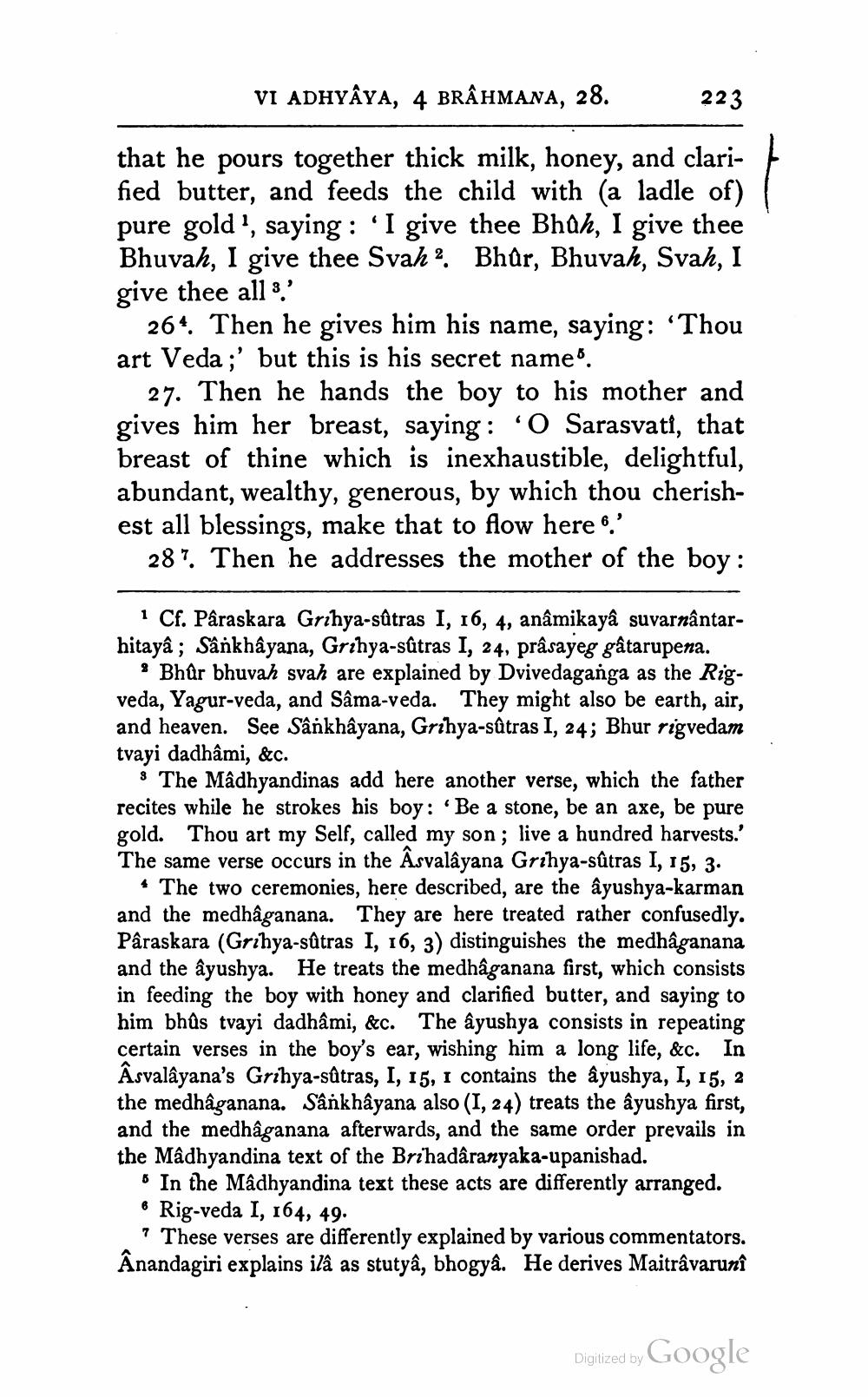________________
VI ADHYAYA, 4 BRAHMANA, 28.
223
that he pours together thick milk, honey, and clarified butter, and feeds the child with (a ladle of) pure gold', saying: 'I give thee Bhah, I give thee Bhuvah, I give thee Svah?. Bhûr, Bhuvah, Svah, I give thee all 3.
264. Then he gives him his name, saying: “Thou art Veda ;' but this is his secret name.
27. Then he hands the boy to his mother and gives him her breast, saying: 'O Sarasvati, that breast of thine which is inexhaustible, delightful, abundant, wealthy, generous, by which thou cherishest all blessings, make that to flow here 6.'
28? Then he addresses the mother of the boy :
1 Cf. Pâraskara Grihya-sûtras I, 16, 4, anâmikayâ suvarnântarhitayâ; Sânkhâyana, Grihya-sútras I, 24, prâsayeg gâtarupena.
Bhûr bhuvah svah are explained by Dvivedaganga as the Rigveda, Yagur-veda, and Sâma-veda. They might also be earth, air, and heaven. See Sânkhâyana, Gríhya-sûntras I, 24; Bhur rigvedam tvayi dadhâmi, &c.
3 The Mâdhyandinas add here another verse, which the father recites while he strokes his boy: ‘Be a stone, be an axe, be pure gold. Thou art my Self, called my son; live a hundred harvests.' The same verse occurs in the Âsvalâyana Grihya-sûtras I, 15, 3.
• The two ceremonies, here described, are the âyushya-karman and the medhậganana. They are here treated rather confusedly. Pâraskara (Grihya-sûtras I, 16, 3) distinguishes the medhaganana and the âyushya. He treats the medhậganana first, which consists in feeding the boy with honey and clarified butter, and saying to him bhûs tvayi dadhâmi, &c. The âyushya consists in repeating certain verses in the boy's ear, wishing him a long life, &c. In Asvalâyana's Grihya-sûtras, I, 15, 1 contains the âyushya, I, 15, 2 the medhaganana. Sânkhâyana also (I, 24) treats the âyushya first, and the medhậganana afterwards, and the same order prevails in the Mâdhyandina text of the Brihadâranyaka-upanishad.
• In the Mâdhyandina text these acts are differently arranged. & Rig-veda I, 164, 49.
? These verses are differently explained by various commentators. Ânandagiri explains ilâ as stutya, bhogyâ. He derives Maitrâvarunî
Digitized by Google




